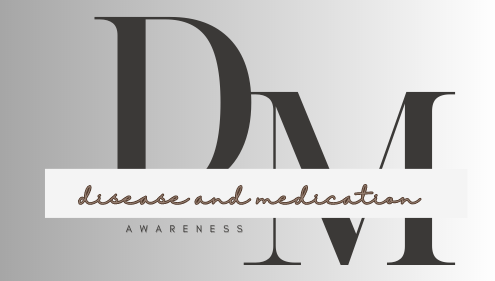Life-Saving Insights:Managing Heart Attacks, Poisoning, Burns, Bleeding,Breathing Difficulties,Severe Pain,Asthma Attack,stroke You Must Handle Like a Pro
Lifesaving tips for common emergencies like heart attacks, severe pain, burns, bleeding, poisoning and breathing difficulties. Stay prepared.
Emergencies can strike unexpectedly, requiring immediate attention to save lives. Understanding their early signs, knowing what actions to take, and being prepared with essential first-aid knowledge can make a significant difference. This guide covers some of the most common emergencies: heart attacks, strokes, asthma attacks, allergic reactions, poisoning, burns, bleeding, breathing difficulties, and severe pain.
Heart Attack: Recognizing the Red Flags
A heart attack often begins subtly, with chest pain or discomfort that radiates to the arm, back, or jaw. Accompanying symptoms include sweating, nausea, and difficulty breathing. Administering aspirin (if not allergic) and calling emergency services immediately is crucial.
Case Insight: During my practice, a patient complained of persistent shoulder pain. While it seemed minor, further tests revealed a heart attack in progress. Early detection and rapid medical intervention saved their life.

Stroke: Think Fast and Act Quickly
Strokes impair brain function within minutes, leading to common emergencies, making time a critical factor. The acronym FAST—Face drooping, Arm weakness, Speech difficulty, Time to call emergency services—serves as a guide to recognizing symptoms. Prompt treatment can minimize long-term effects.
Case Insight: I recall treating a man whose slurred speech and arm weakness were immediately recognized by his family. Their quick decision to seek help allowed us to administer clot-busting medication within the critical window.
Asthma Attack: Managing the Airway
Asthma attacks are frightening, characterized by wheezing, chest tightness, and labored breathing. Using a rescue inhaler is the first line of defense, but persistent symptoms warrant emergency care.
Case Insight: A 10-year-old patient at a community health camp suffered an asthma attack triggered by pollen. Administering albuterol stabilized him before further complications arose, highlighting the importance of carrying an inhaler.
Allergic Reactions (Anaphylaxis): A Race Against Time
Severe allergic reactions, or anaphylaxis, cause swelling, breathing issues, and a rapid pulse. Immediate use of an epinephrine auto-injector (EpiPen) can reverse symptoms temporarily until professional help arrives.
Case Insight: A teenager consumed peanuts despite having a known allergy. Quick administration of an EpiPen stabilized her condition, preventing a potentially fatal outcome.
Poisoning: Quick Action is Vital
Poisoning can occur from chemicals or lie in common emergencies, food, or medication overdoses. Symptoms vary but often include nausea, confusion, and difficulty breathing. Activated charcoal can neutralize certain toxins, but professional treatment is critical.
Case Insight: A toddler ingested household cleaner while playing. The parents immediately called the poison control center and followed advice, preventing serious harm before reaching the hospital.
Burns: Cooling the Damage
There are three degrees of burns based on severity. Minor burns can be treated with cool water, but severe burns require immediate medical care.
Case Insight: During a first-aid demonstration, a participant applied cold water and wrapped a clean cloth over a second-degree burn. This simple but effective response minimized damage.

Bleeding: Controlling the Flow
Severe bleeding can lead to shock. Applying firm pressure with a clean cloth often stops the bleeding. For larger wounds, elevation or a tourniquet may be necessary.
Case Insight: A construction worker sustained a deep cut to his arm. His colleague applied pressure and used a belt as a makeshift tourniquet until help arrived, preventing significant blood loss.
Breathing Difficulties: Securing the Airway
Breathing issues stem from causes like asthma, allergies, or choking. Ensuring the airway is clear and calming the individual are key steps before medical help arrives.
Case Insight: A middle-aged man hyperventilating due to anxiety was coached through slow breathing exercises. These techniques restored his breathing pattern without requiring further intervention.
Severe Pain: An Urgent Signal
Severe pain signals conditions like appendicitis or kidney stones. Immediate medical attention is essential.
Case Insight: A young woman with sharp abdominal pain was diagnosed with a ruptured ectopic pregnancy. Quick action saved her life, highlighting the importance of not ignoring severe symptoms.
FAQs
- What should I do during a heart attack? Administer aspirin if not allergic and call emergency services immediately.
- How can I manage an asthma attack? Use a rescue inhaler and stay calm. If symptoms persist, seek medical help.
- What’s the first step for a burn? Run cool water over the burn and cover it with a clean cloth. Avoid applying creams or ice.
- How to stop severe bleeding? Apply firm pressure and elevate the affected limb if possible.
- What should I do if someone is choking? Perform the Heimlich maneuver or chest thrusts to clear the airway.
